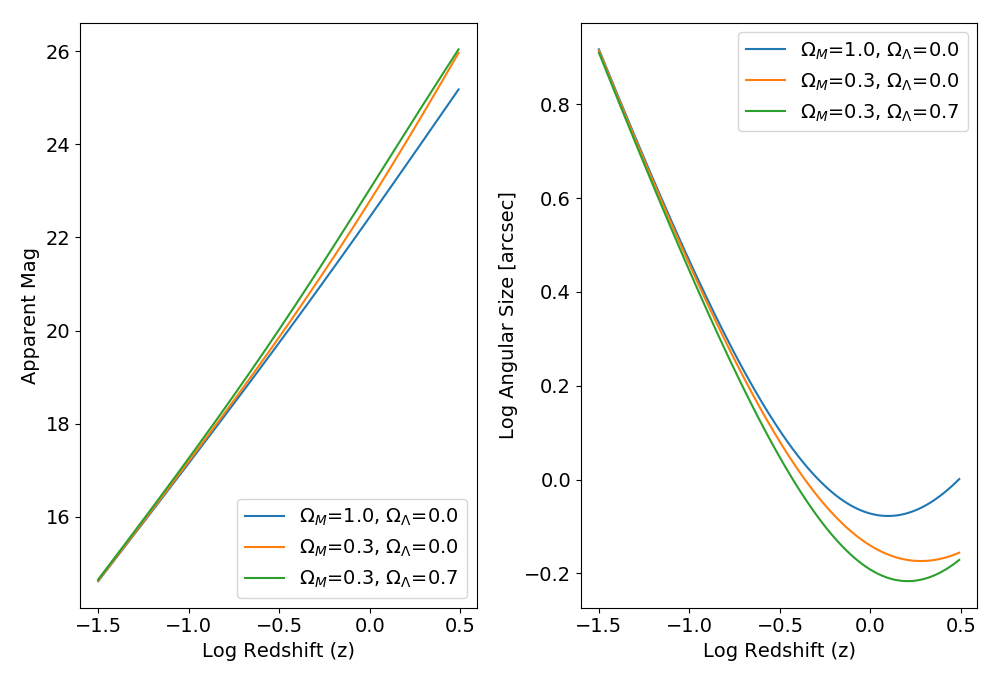
| Luminosity distance Normally, flux = Luminosity/(4piD2). But what do we mean by D in curved space? Let's define a luminosity distance dL so that we can simply use the normal flux equation, and then work out what dL is in different cosmologies. First, define a coordinate distance that depends on the scale factor R and the comoving distance r. The energy flux you get from an object at that position is:
| Angular size distance Normally, the angular size of an object is given by theta=size/distance (using the small angle approximation). Under cosmology, we write theta = size/(Rr) and then note that R = 1/(1+z), so theta = size(1+z)/r If we define the angular size distance as dA=r/(1+z), then we can use theta = size / dA like usual. |

The above discussion about apparent brightnesses and the luminosity
distance assumes you are detecting all the flux at all wavelengths --
i.e, measuring the bolometric flux. We never do this. We measure
brightness over a range of wavelengths, ie through a filter. In terms
of wavelengths, redshift both shifts and stretches light we see from
distant objects. How does this complicate things?
So when we observe high redshift objects, we are seeing them at intrinsically different (bluer) wavelengths. Things will look different! Or, you can observe in redder (infrared) filters as you look at objects at higher reshift. |
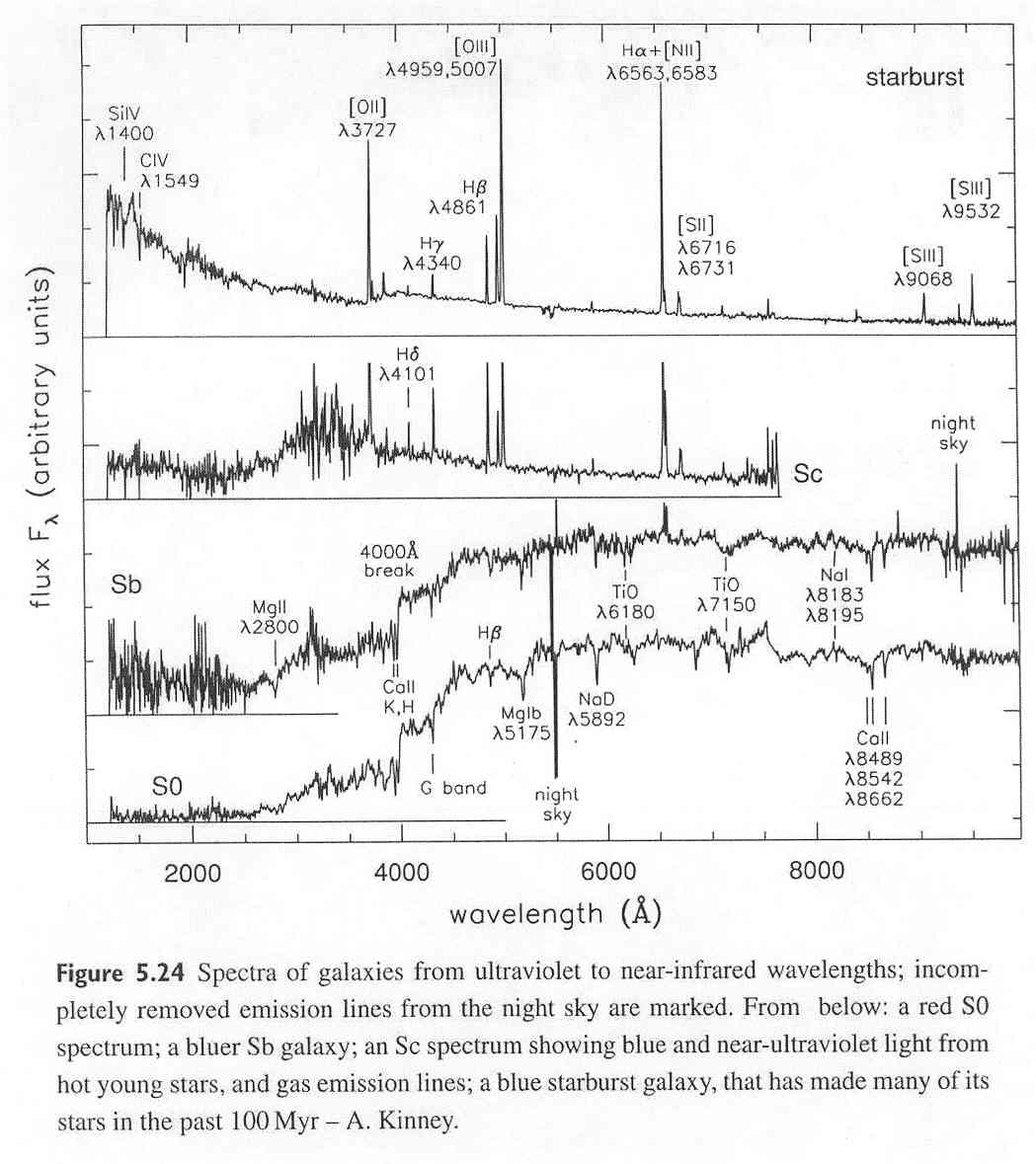 |
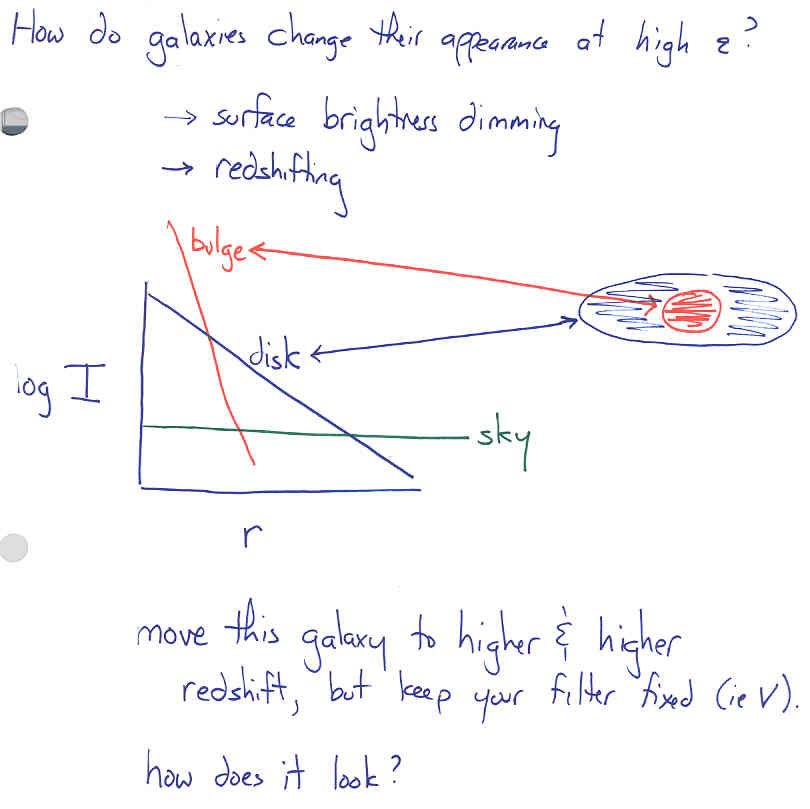
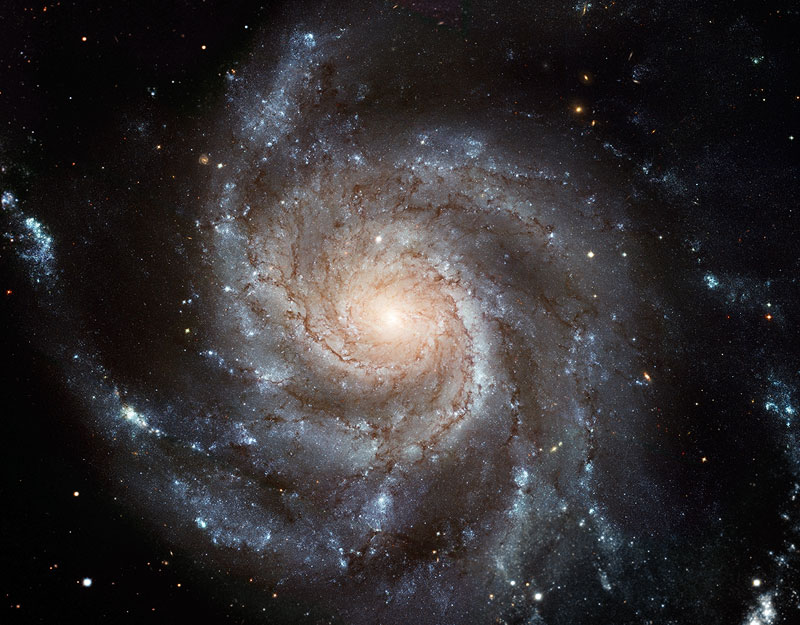 | 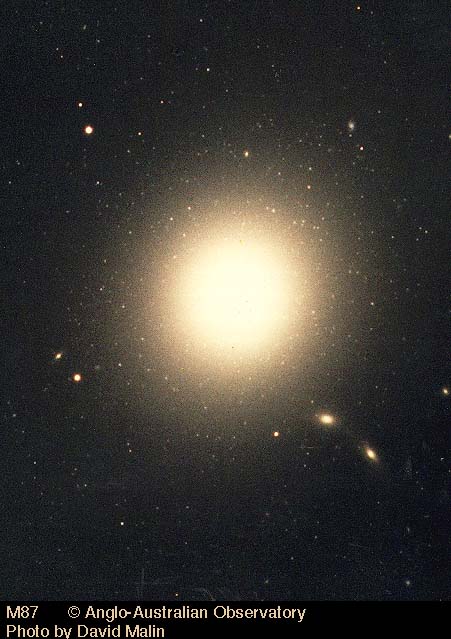 |